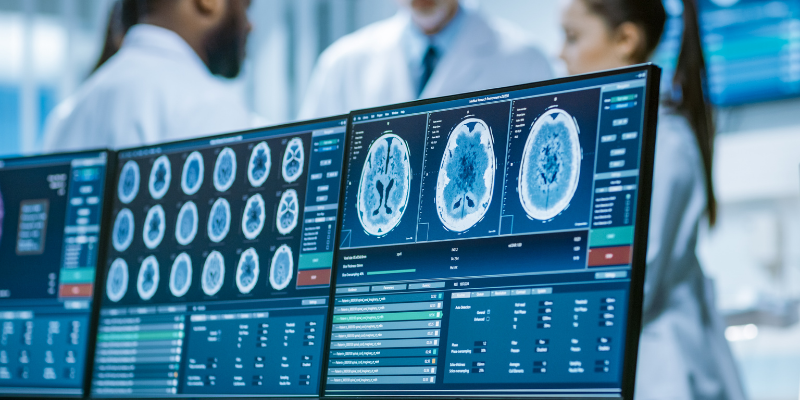Preventing Injury: Exploring Smaller Head Impacts as a Cause of Concussion
February 25, 2021 Posted by AHW Endowment

To learn more about this funded project, click here.
It’s estimated that as many as 3.8 million sports-related concussions occur annually in the United States. They result in over 200,000 trips to the emergency department and can affect critical brain functions like memory, judgement, speech, and muscle coordination. The long-held understanding of how a concussion occurs is based on a single head impact injury – think of the blow to a head from a car accident or the high-speed collision of two athletes. However, new data points to a second, more subtle, cause of concussion – high numbers of smaller, repetitive head impacts sustained over time.
Called a subconcussive impact, the injury is less severe and does not result in a concussion on its own. But the way these smaller impacts accumulate in the body is not well understood and is the focus of new research led by researchers at the Medical College of Wisconsin.
Through a $200,000 AHW investment aimed at supporting novel, early-stage research, Brian Stemper, PhD, professor of neurosurgery and biomedical engineering, is leading a cross-disciplinary team working to better understand how these smaller impacts accumulate in the brain and their symptoms to prevent injury and protect long-term health.
It’s an issue that came to light after Stemper worked with a team of researchers to collect data from six National Collegiate Athletic Association (NCAA) Division I football teams. From 2015-2019, one-third of players from the University of North Carolina, Virginia Tech, University of Wisconsin-Madison, UCLA, West Point, and the United States Air Force Academy wore sensors in their helmets, collecting data on each and every impact that occurred during contact practice and games. The data, collected as part of the Concussion Assessment, Research and Education (CARE) Consortium, gave researchers new insights into the magnitude, frequency, and type of impacts players sustain.
“The mechanism of concussion is often a single head impact that leads to large head accelerations,” said Stemper, describing the way the brain moves rapidly inside the skull during a large head impact, damaging the brain tissue. “What we were noticing in the football players was that a lot of players had concussions after relatively modest head impacts.”
In examining the data, the team found that half of the athletes with concussions did not experience the larger, high-magnitude head impacts so often associated with concussion. Rather, data indicated their concussions were likely the result of high numbers of smaller, repetitive head impacts throughout the season that may have produced accumulating changes in the brain.
The finding led Stemper to delve further. Using AHW funding, Stemper and his team have recreated the experiences of the players in a lab. They matched their laboratory study to reflect what football players experienced on the field, including the number, magnitude, and frequency of head accelerations.
Stemper notes that contact sport athletes are unique in that they sustain repeated head impacts over the course of a season.
“The majority of concussions, if treated and attended to properly, tend to resolve over time without any significant lifelong issues for the patient,” said Stemper. “The problem comes with repeated concussions.”
“We can essentially model head impact exposure from hockey, soccer, la crosse, or any contact sport.” – Brian Stemper, PhD
In severe cases, the effects of repeated concussions can include lifelong emotional and cognitive issues.
The research team’s preliminary laboratory data indicates high levels of repetitive head impact exposure does produce concussion-like symptoms. However, the symptoms of a single head impact and repeated subconcussive impacts appear to be different; while single head impacts often resulted in symptoms of aggression and lack of inhibition, high numbers of repeated subconcussive impacts resulted in anxiety and stronger cognitive deficits.
“The types of symptoms are different and may allude to a different type of injury between the two mechanisms,” said Stemper.
Another component to the project is analyzing blood samples for indicators of concussion. While research into the use of blood samples to monitor for indications of concussion-level brain injury is ongoing, the team is using this approach in a new way—to monitor for signs of ongoing brain injury associated with repeated head impacts before the concussion happens.
“This would be a way to identify athletes at risk of concussion before they actually have a concussion,” said Stemper.
The team will continue to analyze their data through June and plans to use the preliminary data to apply for National Institutes of Health (NIH) funding.
“We can essentially model head impact exposure from hockey, soccer, la crosse, or any contact sport,” said Stemper.
The team plans to focus their future research on understanding how these subconcussive impacts contribute to concussion and defining thresholds for head impact exposure that can inform safety limits for athletes. The hope is that a better understanding of the mechanisms of concussion will lead to better protection for athletes today – and for their health in the long-term.



.png?width=300&name=Untitled%20design%20(9).png)
.png?width=300&name=ACBH%20Infoscope%20Story_featured%20image%20(1).png)